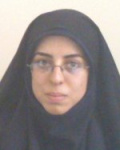| Authors | محسن محمدعلی زاده,نرگس نیکوفرد |
|---|
| Conference Title | Second Nanomedicine and Nanosafety Conference (NMNS 2017) |
|---|
| Holding Date of Conference | 2017-11-29 - 2017-11-30 |
|---|
| Event Place | 1 - تهران |
|---|
| Presented by | دانشگاه علوم پزشکی تهران |
|---|
| Presentation | SPEECH |
|---|
| Conference Level | International Conferences |
|---|
Abstract
Nowadays, continuous separation is proposed as a new method for the separation of DNA and proteins in medicine and biotechnology applications. The aim is to replace the gel used in electrophoresis by a geometrically asymmetric nano-structure. This structure causes biomolecules with different sizes and charges to take different pathways in the nano-structure, which result in a faster and more accurate separation.
In this manuscript, we investigate the rate of transport of the protein lysozyme through asymmetric nano-porous alumina membranes. The alumina membranes are made by the anodization method. The membranes have branches in their nano-channels in one direction which makes them geometrically asymmetric. Dependence of the concentration of the proteins passed through the membrane on the voltage strength is investigated in both alternating and constant electric fields. Also, the amount of passed proteins is plotted versus time for the constant electric field. To study the effect of the direction of motion, the proteins are added to the opposite sides of the membrane in separate experiments. It is seen that the velocity for the transport of the proteins depend on the membrane direction. In the alternating electric field, the motion is faster in the direction of the branches, while it is faster in the opposite direction in the constant electric field. The results show that rectified motion which is a requirement of continuous separation is fulfilled in asymmetric nano-porous alumina membranes.
Intense irregularities appear by repeating the experiments using one membrane which appear to be due to the obstruction of the membrane by the proteins. Different washing protocols are suggested and their effect on the results is discussed. Overall, it seems that simple methods for washing the membrane are not sufficient and more complicated methods are required.
Paper URL
